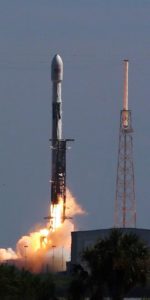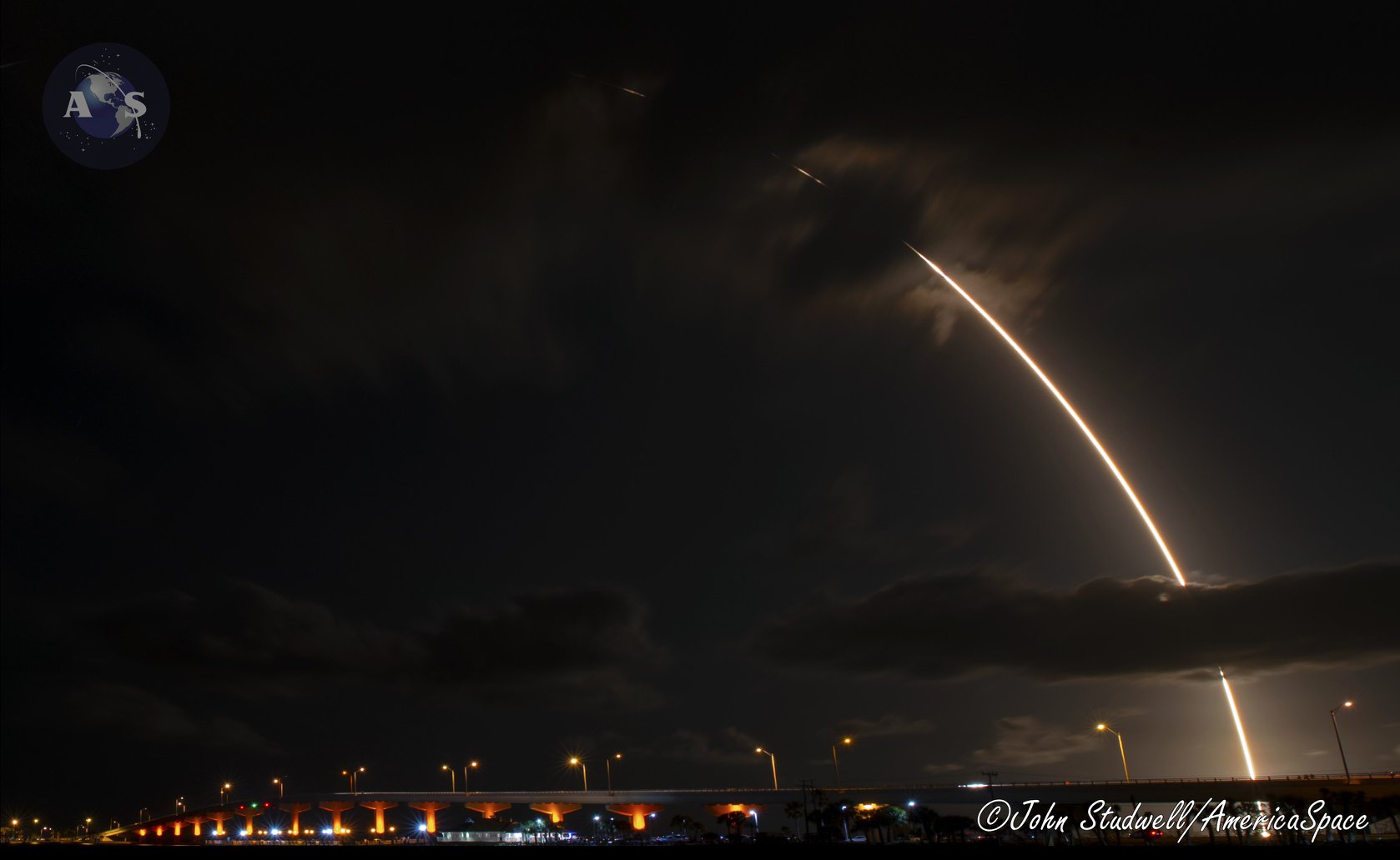
The “John Young” of the Falcon 9 fleet stands ready on historic Space Launch Complex (SLC)-40 at Cape Canaveral Air Force Station, Fla., as SpaceX prepares one of its birds to fly a personal-best-beating sixth mission this week. Core stage B1049, a seasoned veteran of both geostationary and low-Earth-orbital voyages, as well as four previous Starlink launches, is targeted to liftoff no sooner than 10:31 a.m. EDT Tuesday, 18 August. The mission will deliver another batch of Starlink low-orbiting internet communications satellites, together with three SkySat “rideshare” payloads on behalf of Planet Labs, Inc.
FOLLOW AmericaSpace’s LIVE Launch Tracker coverage HERE!
SpaceX has long declared that its in-service Block 5 Falcon 9 can fly up to ten times apiece and, to date, 17 boosters have flown twice, two have launched on three occasions, two others have done so four times and only three have logged as many as five missions. B1049 and its sparkling-new upper stage were rolled out to SLC-40 early Monday and successfully static-fired, ahead of Tuesday’s opening launch attempt.
And although SpaceX has been reflying Falcon 9 cores since March 2017, it has been 2020 which has seen the most prolific examples of this impressive reusability and a record-smashing turnaround rate. A total of 13 missions have been conducted so far this year, originating from either SLC-40 at the Cape or storied Pad 39A at the Kennedy Space Center (KSC), of which all but two—June’s launch of the third Global Positioning System (GPS) Block III satellite for the U.S. Space Force and the historic 30 May flight of Dragon Endeavour—have been lofted atop previously-flown booster cores.
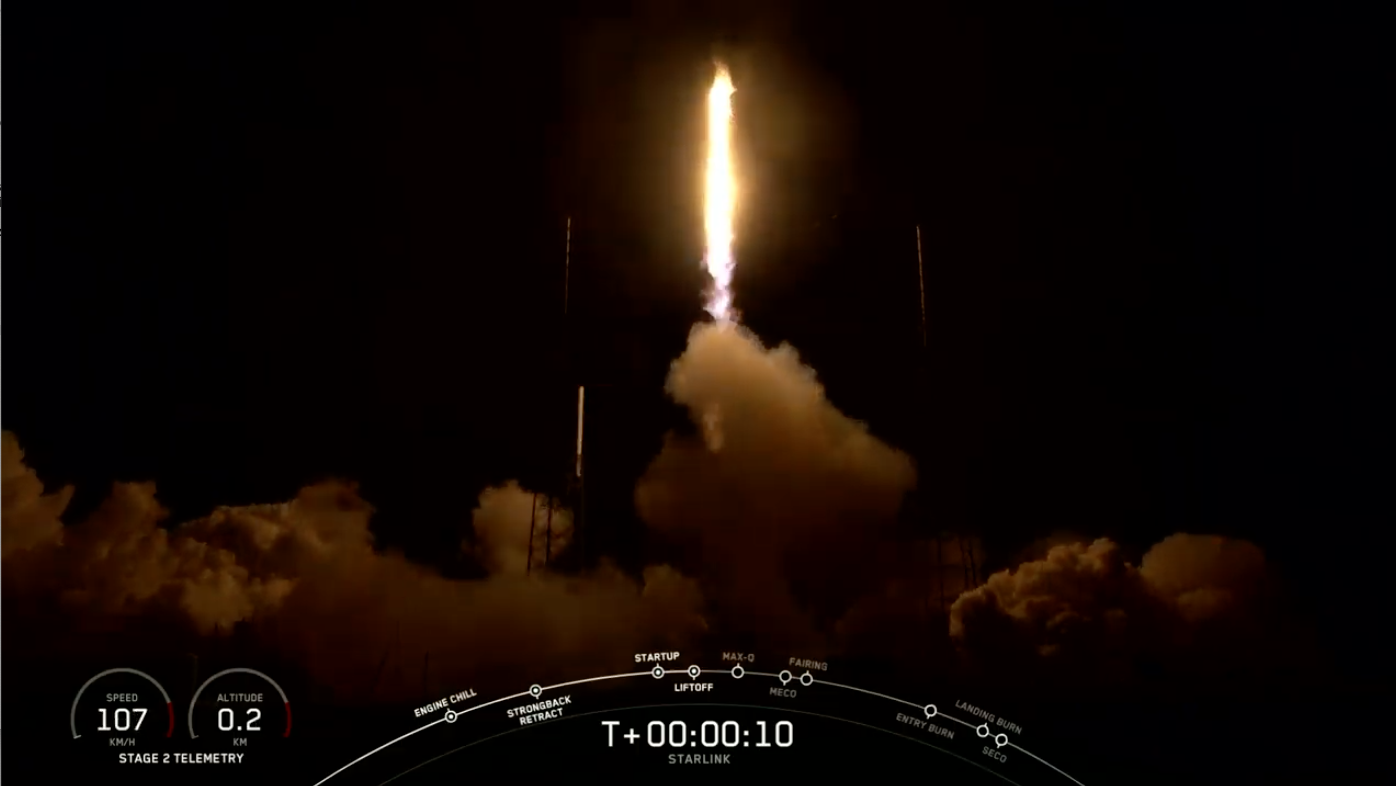
For the first time this year, a hardcore set of boosters made fifth flights and with Tuesday’s launch B1049 will become the first to log a sixth. Not for nothing, therefore, can B1049 be considered the rocket equivalent of legendary Gemini, Apollo and shuttle astronaut John Young, the first human to launch from Earth as many as six times.
In readiness for launch, the Autonomous Spaceport Drone Ship (ASDS), “Of Course I Still Love You”, put to sea on Friday, bound for a position about 390 miles (630 km) downrange of the Cape in the Atlantic Ocean. A successful return of B1049 from its mission on Tuesday will mark the fifth occasion that OCISLY has recovered this particular core stage. B1049 began its spaceflying career in September 2018, when it delivered the heavyweight Telstar 18V communications satellite aloft from SLC-40 towards geostationary altitude.
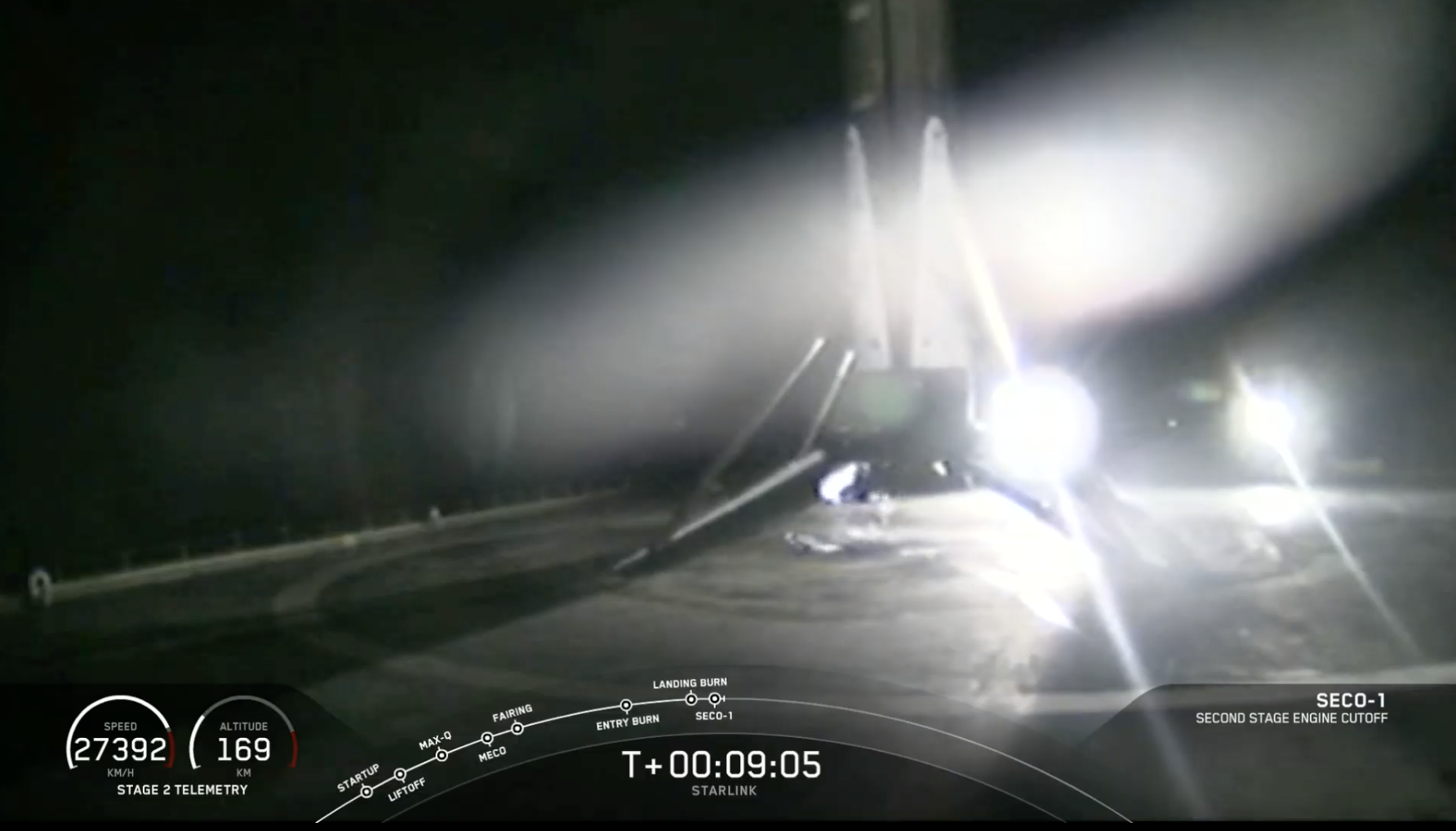
It flew again from the West Coast in January 2019, carrying the eighth and final batch of Iridium NEXT low-orbiting satellites from Space Launch Complex (SLC)-4E at Vandenberg Air Force Base, Calif., then went on to complete four further launches from SLC-40 to deliver three batches of Starlinks in May 2019, January 2020 and June 2020. In doing so, B1049 secured for itself the added accolade of launching the very first U.S. orbital missions of both 2019 and 2020.
Weather conditions for Tuesday’s opening launch attempt are predicted to be favorable, according to the 45th Weather Squadron at Patrick Air Force Base. Data released on Saturday indicates a 70-percent probability of acceptable conditions on Tuesday, with an improvement to 80 percent in the event of a 24-hour scrub to Wednesday, tempered only by a possible infringement of the Cumulus Cloud Rule.
“As Tropical Storm Kyle continues to pull well away from the U.S. into the open Atlantic, it will bring a frontal boundary into the state that will stall across North Florida this weekend into early next week,” the 45th noted. “Early afternoon showers and storms are expected to develop across the Spaceport with the east coast sea breeze each day, with stronger southwest winds pushing additional activity back to the coast in the late evenings. The boundary is forecast to drift into Central Florida by late Monday, increasing the threat for overnight and morning showers and storms near the Spaceport into the launch window.”
In spite of the general favorability of Tuesday’s meteorological outlook, the boundary is predicted to lift northwards on Wednesday. A potential violation of the Cumulus Cloud Rule remains the main issue, although cloud coverage is anticipated to be “more limited as the boundary lifts north”.
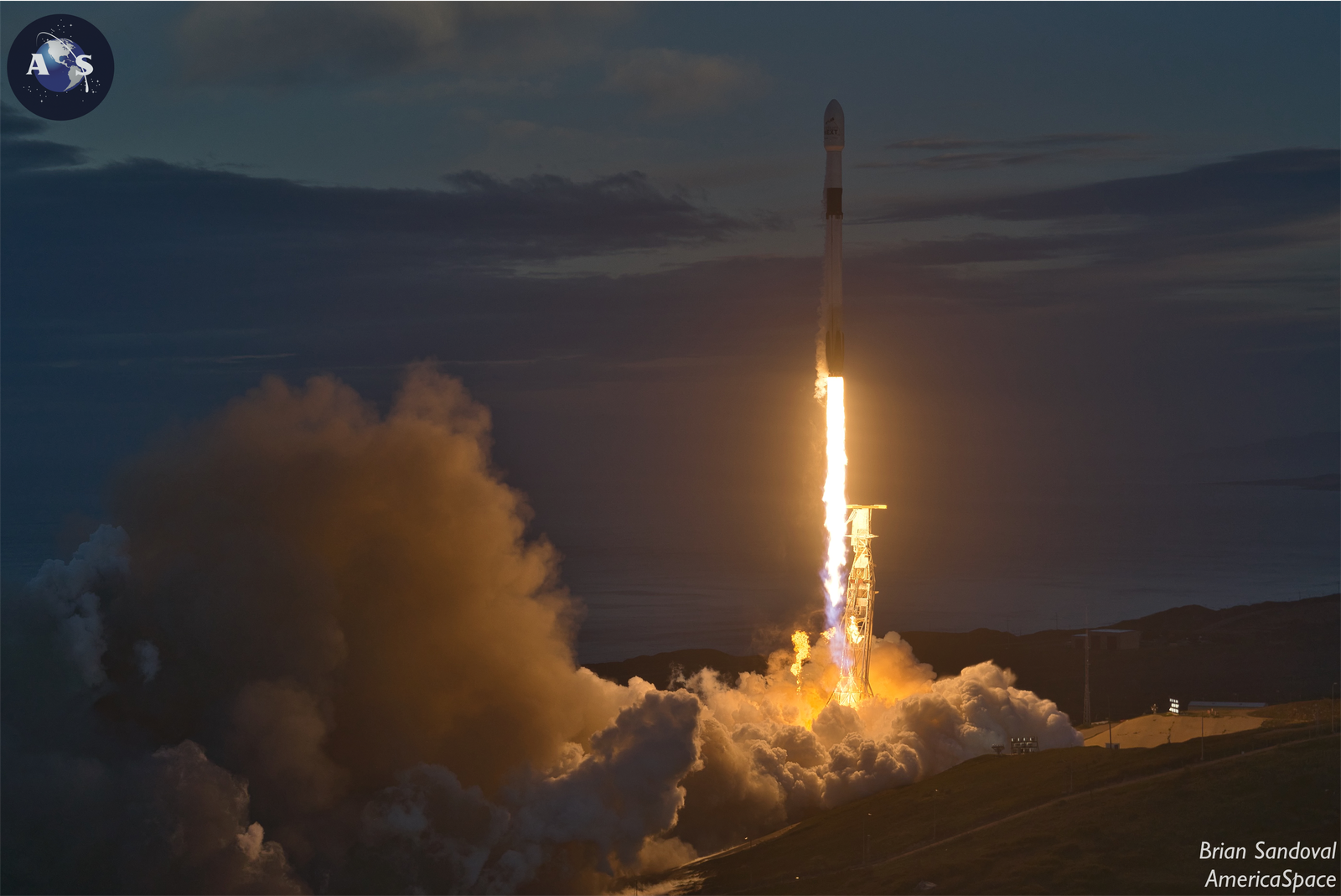
Primary payload for Tuesday’s mission will be 58 low-orbiting Starlink internet communications satellites, all equipped with “VisorSat” optical-darkening technology. These are part of an extensive SpaceX program to emplace around 12,000 small satellites in orbit to handle up to half of all backhaul communications traffic and perhaps a tenth of all local internet traffic in high-population-density cities by the mid-2020s.
Spanning the Ku-, Ka- and V-band regions of the electromagnetic spectrum, Starlinks’ low altitudes make them “100-percent demisable” and they are expected to be maneuverable into disposal orbits for controlled re-entry within five years. However, the sheer number launched in a relatively short period of time—almost 600 between May 2019 and earlier this month—continues to arouse controversy, both in terms of the work of astronomers and adding to the ongoing debate about the effects of space debris.
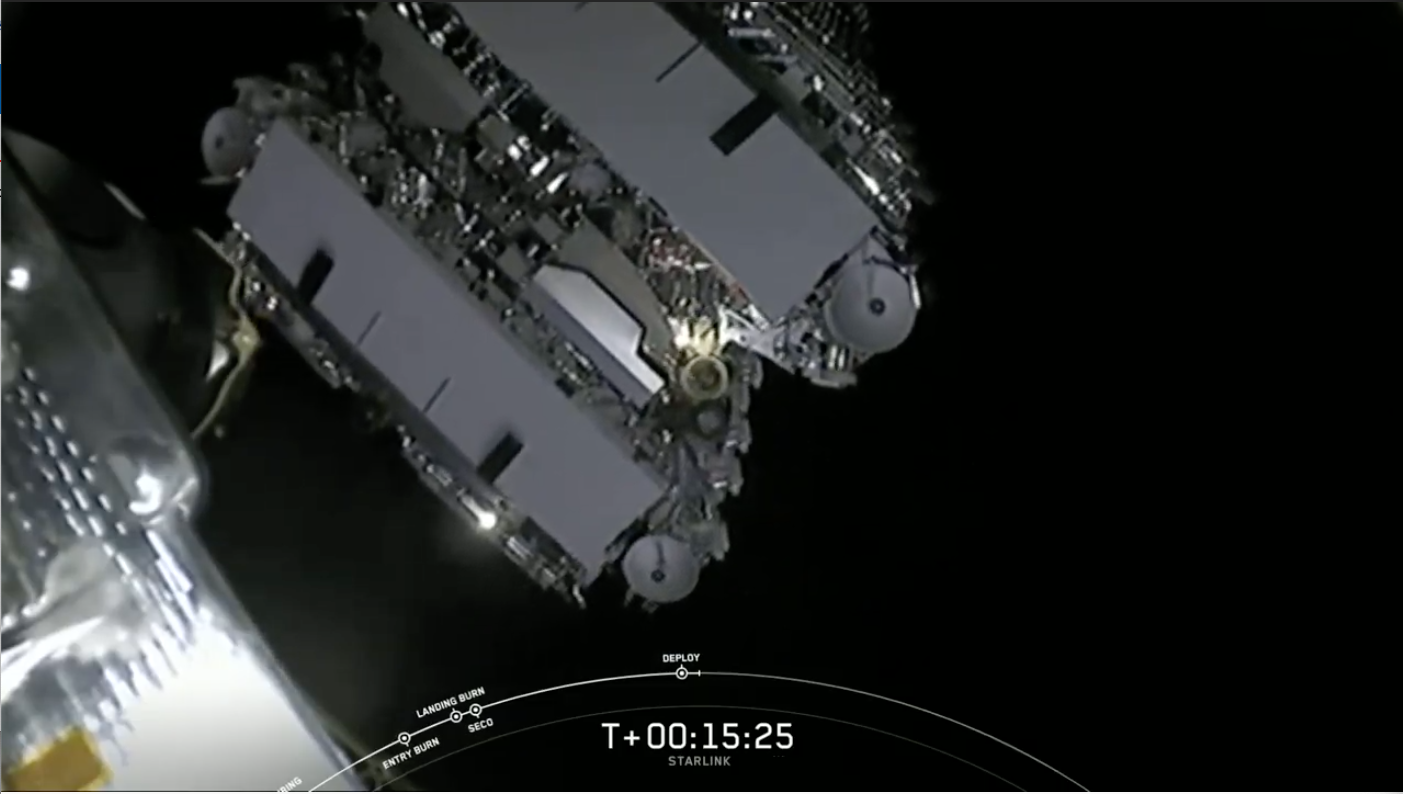
Two Starlink test satellites, Tintin-A and Tintin-B, were launched in February 2018 and successfully validated the phased-array broadband antenna from an orbital perch 320 miles (515 km) above Earth. Then, last May, the first 60 “production-design” Starlink satellites were launched. Although three of the satellites failed shortly after reaching orbit, the remainder are still healthy. More recently, in November 2019 and on eight occasions this year further batches of Starlinks were boosted aloft. SpaceX President Gwynne Shotwell has already confirmed plans to launch further sets of Starlinks approximately every two weeks throughout the rest of the year.
Riding “piggyback” are three SkySat satellites, flying on behalf of San Francisco, Calif.-headquartered Planet Labs, Inc. Founded back in December 2010, Planet Labs seeks to develop flexible, inexpensive satellites to perform daily Earth imaging as part of efforts to monitor ongoing change and pinpoint evolving trends. SkySats are based upon CubeSat technology, albeit upscaled to approximately the size of a mini-fridge. Each unit measures about 31 inches (80 cm) in length, almost three times larger than a standard CubeSat, and weighing in the region of 220 pounds (100 kg).

Between November 2013 and June 2020, a total of 18 SkySats were launched atop a range of boosters, from Russia’s Dnepr and Soyuz-2.1b to India’s Polar Satellite Launch Vehicle (PSLV)-XL and from Europe’s Vega to Northrop Grumman Corp.’s Minotaur-C and SpaceX’s Falcon 9. Accordingly, those satellites have begun their journeys to observe the Home Planet from many locations across the Home Planet, from Dombarovsky in western Russia to Baikonur in Kazakhstan, from Kourou in French Guiana to Sharikota in the Andhra Pradesh region of southeastern India and from Vandenberg Air Force Base, Calif., to Cape Canaveral Air Force Station, Fla.
The satellites’ sub-meter-resolution imaging capabilities allow them to observe objects which directly impinge on the global economy, such as terrain, cars and shipping containers. They can capture video clips lasting up to 90 seconds at 30 frames per second and their high-definition imagery is expected to aid understanding of the movement of goods and people to afford a more “visual” perspective of supply chains, shipping, industrial activity and humanitarian relief efforts. According to Planet Labs, the optical instrumentation of the most recent SkySats has a resolution of less than 28 inches (72 cm).
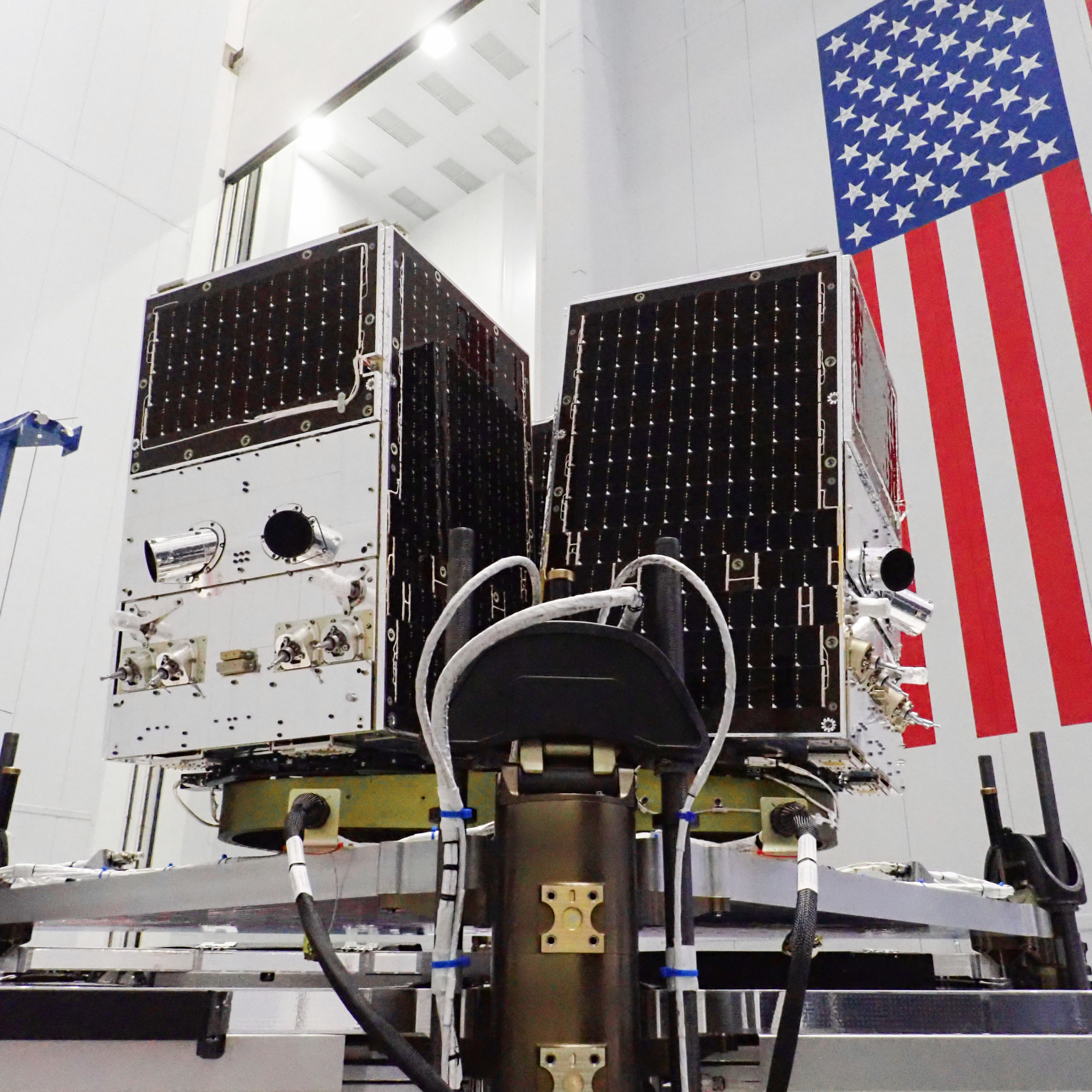
The first two SkySats, launched in November 2013 and July 2014, were produced in-house by Skybox Imaging, later renamed Terra Bella following its acquisition by Google. The satellites were both equipped with a multispectral, panchromatic and video sensor with a spatial resolution as fine as 2.9 feet (0.9 meters) from their orbital altitude of about 280 miles (450 km).
The next 13 SkySats were fabricated by Space Systems/Loral (SS/L)—now part of Westminster, Colo.-based Maxar Technologies—and were much larger than their predecessors, put into Sun-synchronous orbits at an altitude of 310 miles (500 km). When Planet Labs acquired Terra Bella from Google in early 2017, it entered a multi-year contract with the internet services giant to purchase SkySat imaging data.
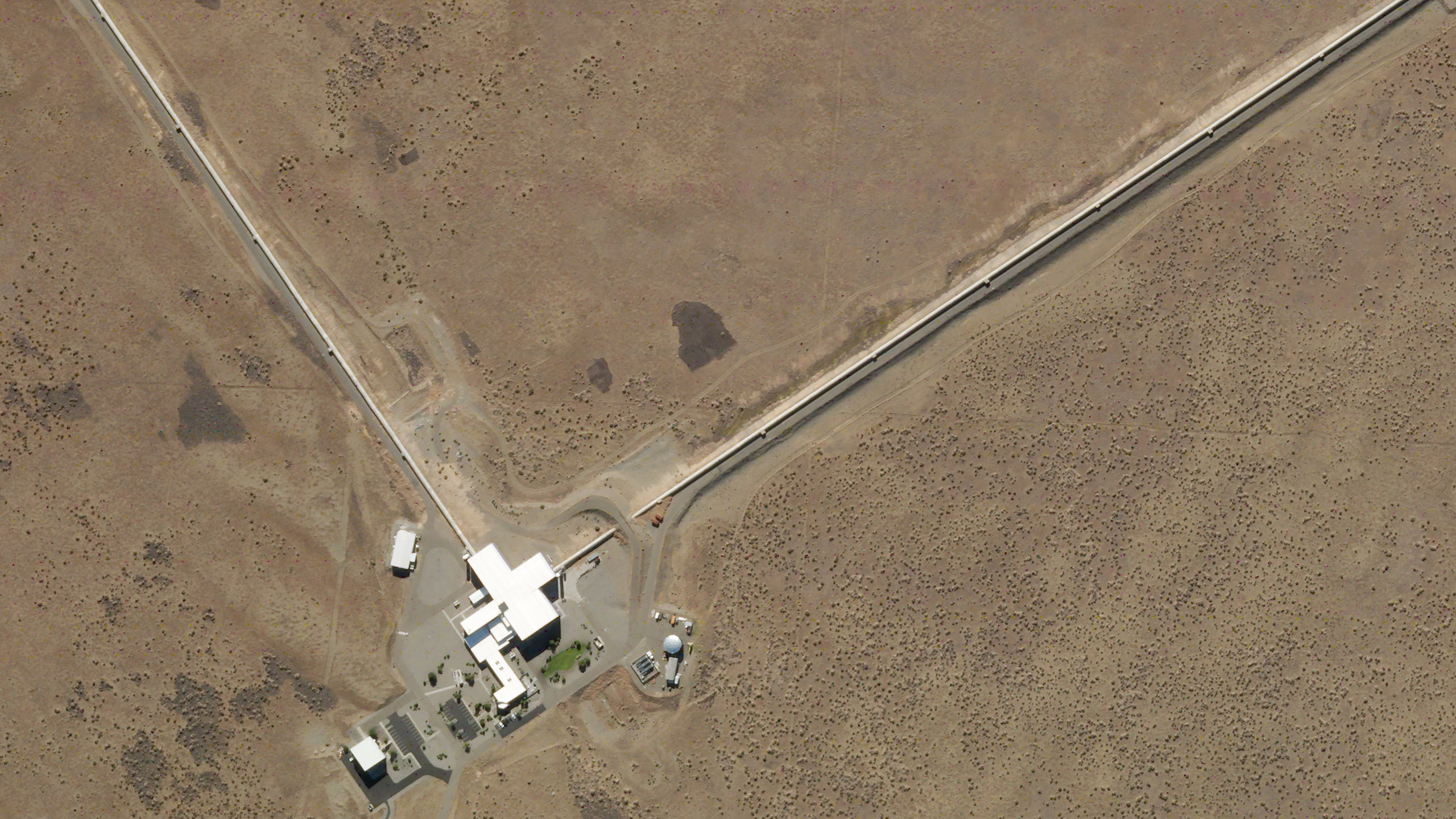
As recently outlined by Planet Labs, six more SkySats were assigned as “rideshare” passengers alongside two Starlink batches, one flown in June and the second hopefully tomorrow. All six will occupy a “mid-inclination” orbit of 53 degrees to directly complement the Sun-synchronous-orbiting fleet, doubling the average revisits over any point on the globe and providing “more targeted coverage and raw image capacity in key geographic regions”.
These six new arrivals will benefit from a rapid revisit capability to capture imagery of singular locations on Earth up to 12 times per day and a global average of seven revisits per day. It is anticipated that rapidly revisiting the same locations on Earth will allow consumers to better fulfil business and mission needs by affording shorter intervals between images to understand and properly characterize human-driven changes or unanticipated events, as well as increasing the chance of getting a cloud-free image or an image of specific shadow angles that could be important for analysis.
FOLLOW AmericaSpace on Facebook and Twitter!
Missions » Commercial Space » Starlink »




